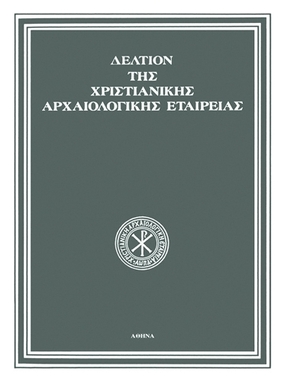Αγία Παρασκευή του Δράκου
Part of : Δελτίον της Χριστιανικής Αρχαιολογικής Εταιρείας ; Vol.32, 1989, pages 49-60
Issue:
Pages:
49-60
Parallel Title:
Hagia Paraskevi tou Drakou
Section Title:
Articles
Abstract:
The church of Hagia Paraskevi tou Drakou (St. Paraskevi of the Dragon) near the village of Ambelia, 11km. NW of Arta, owes its name to a legend connectedwith the cave in front of which it is built. It is crossshaped, measuring 10.85x6.70 m., with a circular dome,a single, semi-circular apse, and a narthex covered witha domical vault. It is the only example of its type, withconches decorating both the east and west walls of thetransverse arm of the cross.The windows have brick dressings. Those in the gablesare bilobed, of the arcade type, with a brick pier between the lights. The two-light windows in the northand south gables, and the blind bilobed window in thewest gable, are flanked by semi-arches. A dentil coursesurrounds the window arches in the dome and linkstheir springings, while another probably encircled thebuilding, apart from the east arm, at the level of the sillsof the two-light windows.The masonry consists of roughly hewn blocks of limestone with very few bricks in the joints. Parts of thewalls have been reconstructed. Both stone and brick areused in the vaults. The roof is covered with stone slabs.Hagia Paraskevi combines features both of the Pre-Helladic school, which flourished in south and west Greecein the 8th, 9th and 10th centuries, and of the Greekschool, and it could be dated to the second half of the11th century. It is one of the few monuments of westernGreece which may be dated to the 11th or 12th centuries, bridging the gap between the churches of the PreHelladic school and the architecture of the Despotate ofEpirus.
Subject:
Subject (LC):




